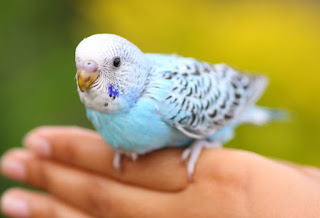
Training Pet Parrots
Training pet parrots has benefits that extend well beyond the entertainment value of a parrot that can talk and do tricks. Training will strengthen the bond you have with your parrot, who will look forward to the one-on-one attention involved in training sessions, especially when success means lots of praise and attention along with favorite treats. Also, teaching some simple commands will make handling your parrot easier.
Keep It Positive
The key to training your parrot is to keep the interaction positive. Three concepts provide the basis for parrot training:
Parrot does something good, give it a reward
Parrot does something undesirable, ignore it
Never punish your parrot
This is a bit simplistic, but your goal is to shape your bird's behavior into what you want by giving a reward for good things and ignoring (no reward, no reaction) for bad things. The reward can be a favorite food treat, but simple praise or a play session with a treasured toy can be a good motivation for some birds. If your bird is doing something undesirable, you must simply ignore the bird (your bird will not respond to punishment). A negative reaction can turn into a reward if your bird is looking for attention (negative attention is better than no attention), so you must be careful not to unintentionally cause some undesirable behaviors to increase due to your reaction. Ignoring behavior might first cause it to intensify, but eventually, the undesirable behavior will most likely stop. How you approach training can help keep training positive:
Train only when you are relaxed. Positive training does take patience!
Pick a time when your bird is attentive and not distracted by eating, preening, or household activity.
Frequent, but short, training sessions are generally more effective. A few minutes at a time, several times a day works well.
Pick a favorite reward (but don't overdo it if it is food).
Once your bird catches on to something, don't give a treat every time (switch to praise part of the time) or your bird may only do the behvior if it knows you have a
treat handy.End each session on a positive note. Wait for a successful attempt or at least a good try at whatever you are training, give a treat, and move on to something else.
Keep training sessions upbeat and fun for your bird.
Very Basic Training: Step up and Step Down
If you had to choose only two things to teach your parrot, these would be the ones to pick. This means training your parrot to step up onto your finger or wrist (or hand-held perch) on command, and then step back off again. These are relatively easy and extremely important skills to teach. Stepping up is quite a natural movement for a bird so it is generally easy to train this on command (stepping down is a bit trickier to teach).
Getting your bird to step up and step down on command makes handling much easier and helps you to set some boundaries for your bird (for example, you can more easily remove your bird from areas of your home that are not bird-proofed, return a bird to its play gym or cage, etc.). If you have a baby bird, it is probably pretty cooperative but starting early with the step up and step down commands is still a good idea. Not only does training a cooperative baby allows you to give lots of positive reinforcement, but it also sets a good foundation for training more skills to your bird in the future.
More Parrot Training and Behavior Advice:
Some birds do not take to being petted as it is not a natural behavior. However, you can apply the principles of parrot training to increase your bird's acceptance of contact, as long as you work to understand your bird's personality and body language.

0 Response to "Training Pet Parrots"
Post a Comment